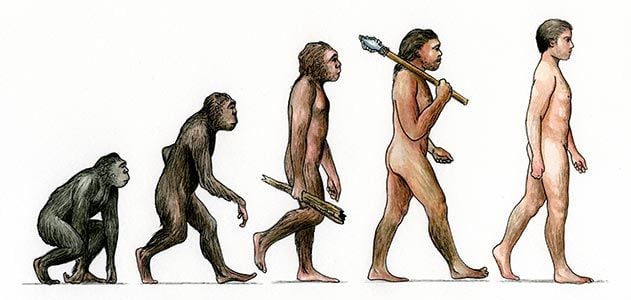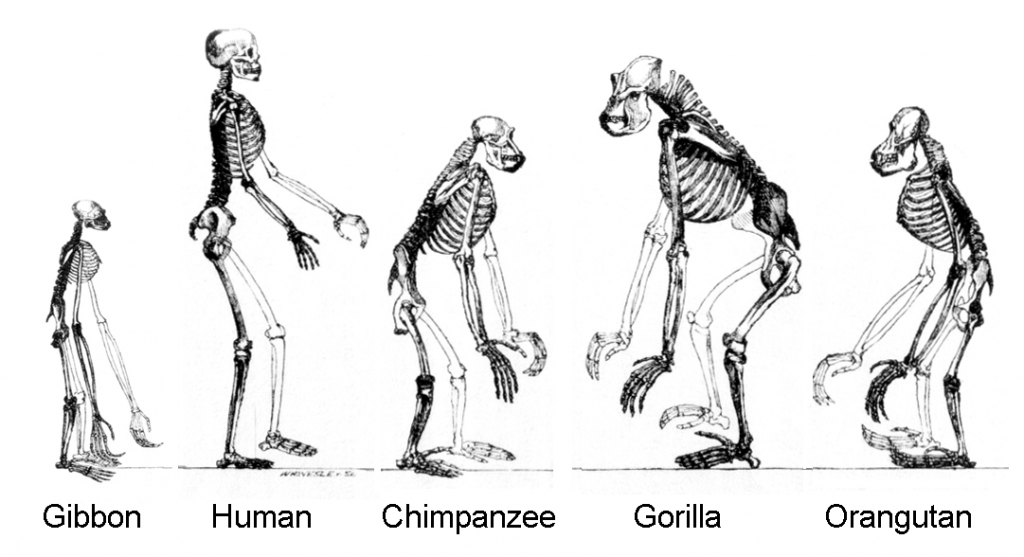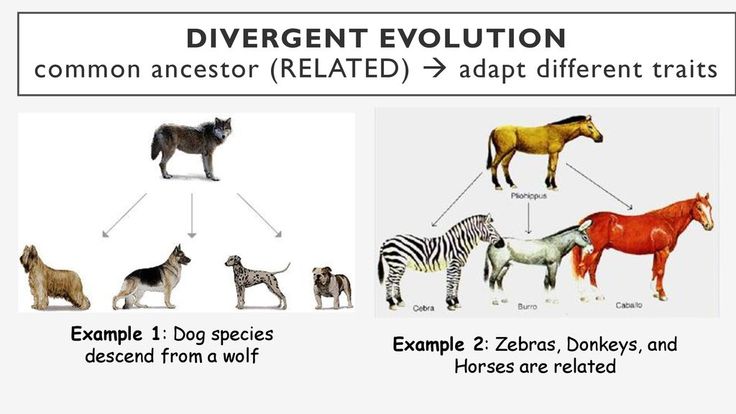Evolution, in its broadest sense, refers to the gradual process of change and adaptation over successive generations within populations of organisms. At its core, evolution is driven by natural selection, genetic drift, mutation, and other mechanisms, shaping the diversity of life on Earth. This fundamental principle underscores that all living organisms, including humans, have evolved from common ancestors and continue to undergo evolutionary changes to adapt to their environments.

The pace of organism development, growth, and aging including eventual demise is one of the aspects of evolution.
Indeed, evolution influences virtually every aspect of our existence, exerting its influence on our physical characteristics, behaviors, and biological processes. From the structure of our DNA to the complexity of our social behaviors, evolutionary forces have left their mark on the intricate tapestry of human biology and culture. Our species’ development, including our lifespan and aging process, is intricately intertwined with evolutionary history and the selective pressures that have shaped our genetic makeup over millions of years.
A compelling example of evolution’s impact on aging and lifespan can be observed in comparisons between species. Some organisms, like the naked mole rat, defy conventional aging patterns and exhibit remarkable longevity compared to their rodent relatives. These differences underscore the diversity of evolutionary strategies employed by different species to cope with environmental challenges and optimize survival.

By studying aging and evolution at various levels – from the entire animal kingdom to individual species and even within populations – researchers gain invaluable insights into the mechanisms underlying aging, longevity, and the diversity of life on Earth. Understanding how evolution influences the way we develop and age provides a comprehensive framework for exploring the complexities of biological aging and advancing our efforts to promote healthier aging across species.
Evolution and the animal kingdom on the whole
The concept of aging and its role in the animal kingdom indeed offers intriguing insights into evolutionary biology. Across the spectrum of life, from the simplest organisms to our distant ancestors and modern species, aging manifests in various forms, suggesting that it might indeed be a product of evolution rather than a mere flaw.
Aging is present in living organisms by design, animals possess genes that enhance fitness early in life but diminish it in later life
Antagonistic pleiotropy hypothesis
In unicellular organisms such as bacteria and yeast, aging is often linked to the accumulation of damage to cellular components over time. Despite their simplicity, these organisms still exhibit signs of aging, albeit in a more basic form compared to multicellular organisms.
Genes become or passed on faulty, as mutations or alleles that are neutral (i.e., have no effect) early in life, when selection is strong, but deleterious effects late in life, when selection is weak (shaded area) could accumulate in the population. Such late-life deleterious genetic variants can lead to the evolution of aging,
Mutation accumulation hypothesis
As we move up the evolutionary ladder, aging becomes more pronounced and complex. In multicellular organisms, including early metazoans, aging is often associated with a decline in reproductive capacity and physiological functions. This decline is thought to result from a combination of genetic factors, environmental influences, and accumulated cellular damage over time.
One theory regarding the evolutionary origin of aging is the antagonistic pleiotropy hypothesis, proposed by George C. Williams. This hypothesis suggests that genes that confer benefits early in life but have detrimental effects later in life may be favored by natural selection. For example, genes that promote rapid growth and development during youth may increase reproductive success but also contribute to aging and age-related diseases later in life.
Adaptations to the environment linked to lifespan
From an evolutionary perspective, aging can be seen as a trade-off between the benefits of early-life fitness and the costs of physiological decline later in life. In this context, aging may not necessarily be a “bug” but rather a consequence of the trade-offs inherent in evolutionary processes.

Dogs, as domesticated descendants of wolves, living in better, more protected conditions, beneficial for breeding early, and living longer in relative comfort, exhibit differences in sexual maturity and average lifespan compared to their wild ancestors. Generally, dogs reach sexual maturity earlier than wolves, with female dogs typically coming into estrus (heat) for the first time between 6 to 12 months of age, while male dogs reach sexual maturity at a similar age. In contrast, wolves typically reach sexual maturity at around 2 years of age, delaying their reproductive capability compared to domestic dogs. Additionally, the average lifespan of dogs tends to be longer than that of wild wolves. Depending on factors such as breed, size, and health care, dogs can live anywhere from around 10 to 15 years or more, whereas wild wolves typically have shorter lifespans, with an average of 6 to 8 years in the wild. Domestication and selective breeding have influenced both the reproductive and longevity characteristics of dogs compared to their wild ancestors, reflecting the effects of human intervention on canine biology.
A lot of this diversity in lifespan can be quite readily explained by variation in the levels of extrinsic mortality and the evolution of different optimal lengths of reproductive life, including the existence of semelparous organisms that reproduce only once and then die (Stearns 1992). For example, species that are well protected from predators – for example, those that have a shell, can fly, or are poisonous – tend to live longer than related, less well-protected species (e.g., Austad & Fischer 1991, Blanco & Sherman 2005).
In the case of modern humans, traits such as an affinity for calorie-dense foods and a tendency to conserve energy can be seen as relics of our evolutionary past when such behaviors were advantageous for survival in environments where food was scarce and energy expenditure needed to be minimized. However, in today’s environment of abundance, these traits can contribute to health problems such as obesity and metabolic disorders.
Mutation accumulation and antagonistic pleiotropy hypothesis
Medawar (1946, 1952) reasoned that, if the effects of a deleterious mutation were restricted to late ages, when reproduction has largely stopped and future survival is unlikely, carriers of the negative mutation would have already passed it on to the next generation before the negative late-life effects would become apparent. In such a situation, natural selection would be weak and inefficient at eliminating such a mutation, and over evolutionary time such effectively neutral mutations would accumulate in the population by genetic drift, which in turn would lead to the evolution of aging.
Antagonistic pleiotropy, as it applies to aging, hypothesizes that animals possess genes that enhance fitness early in life but diminish it in later life and that such genes can be favored by natural selection because selection is stronger early in life even as they cause the aging phenotype to emerge.
Aging is often about timing and relative to reproductive maturity
Both of these hypotheses point out that aging is all about timing. It begins to accelerate after reproductive maturity and clears the way for new generations.
Moreover, even though selection might favor increased reproductive success, and thus a longer reproductive lifespan, the length of life might be limited by intrinsic trade-offs between reproduction and survival caused by AP. Thus, the evolution of lifespan can be viewed as a balance between selection for increased reproductive success and the factors that increase the intrinsic age-dependent components of mortality (Stearns 1992).
These ideas have been empirically tested and corroborated by several researchers. For example, using an elegant experimental evolution design, Stearns et al. (2000) exposed fruit flies to either high or low levels of extrinsic adult mortality (HAM versus LAM) and found that LAM flies evolved significantly lower levels of intrinsic mortality relative to HAM flies: in other words, HAM flies evolved more rapid aging than LAM flies.
There is further evidence to indicate that early onset of reproductive maturity leads to a shorter life span. It can be observed in natural populations
The most commonly observed trade-off in natural populations involves describing negative associations between fecundity and longevity.
Fecundity is a synonym for fertility, it is the state of being fertile; capable of producing offspring
Negative correlations or inverted correlations between lifespan and reproduction have been described across numerous vertebrates including reptiles, birds, and mammals. In addition, trade-offs in invertebrates are widely reported, although usually in the laboratory context where wild-caught animals can be individually studied. For example, within a large population of Western gulls, individuals who mate early in life have an increased risk of mortality compared with older first-time breeders [1]. Similarly, red squirrels that breed early have shorter lifespans than those that delay first breeding [2].
The risk of mortality can be attributed to the decreased functioning of the immune system associated with reproduction, basically raising offspring in the wild may be very resource-intense, any human parent would testify to that too.
Interestingly, these trade-offs are often absent among captive mammals and birds, suggesting that the selective pressures that drive antagonistic pleiotropy are relaxed under benign or favorable environmental conditions [3]. Thus, while trade-offs between lifespan and reproduction appear common in natural populations because we most often do not know the individual genes involved, we cannot unequivocally attribute them to antagonistic pleiotropy as contrasted with, say, the disposal soma hypothesis.
The quicker the churn of generations, the more optimized the species in adapting to change, from this we can assume that aging is a feature of living organisms faced with changing environments.
References
1. Pyle P, Nur N, Sydeman WJ et al. . Cost of reproduction and the evolution of deferred breeding in the western gull. Behav Ecol 1997;8:140–7.
2. Descamps S, Boutin S, Berteaux D et al. . Best squirrels trade a long life for an early reproduction. Proc Biol Sci 2006;273:2369–74.
3. Ricklefs RE, Cadena CD. Lifespan is unrelated to investment in reproduction in populations of mammals and birds in captivity. Ecol Lett 2007;10:867–72.